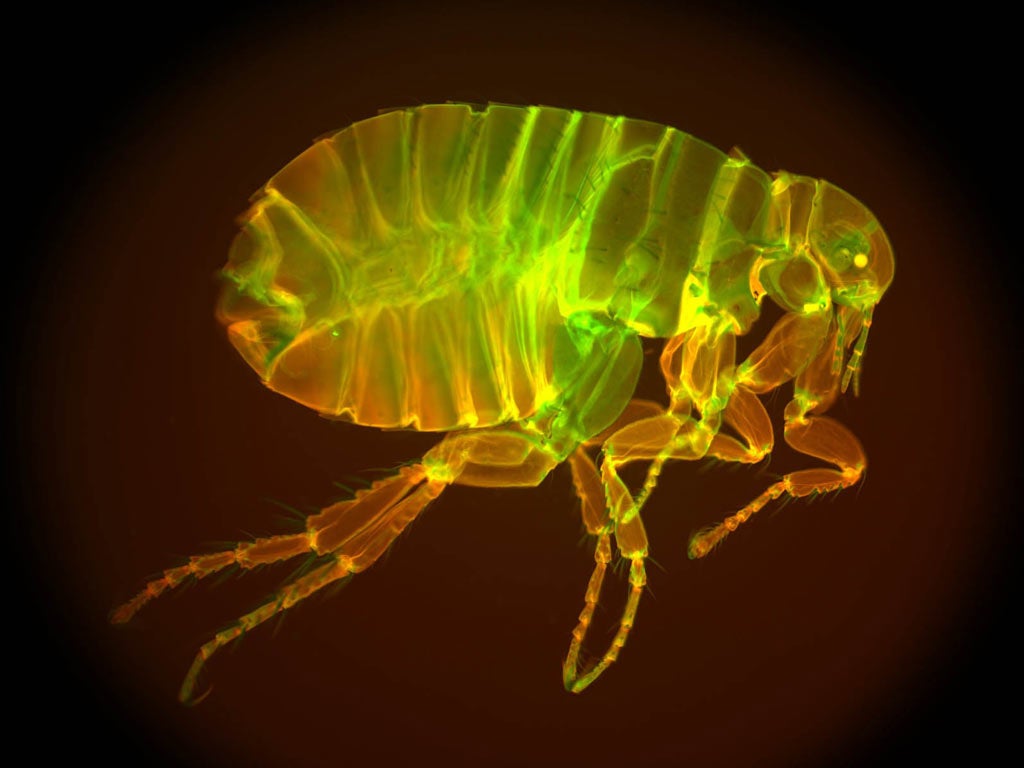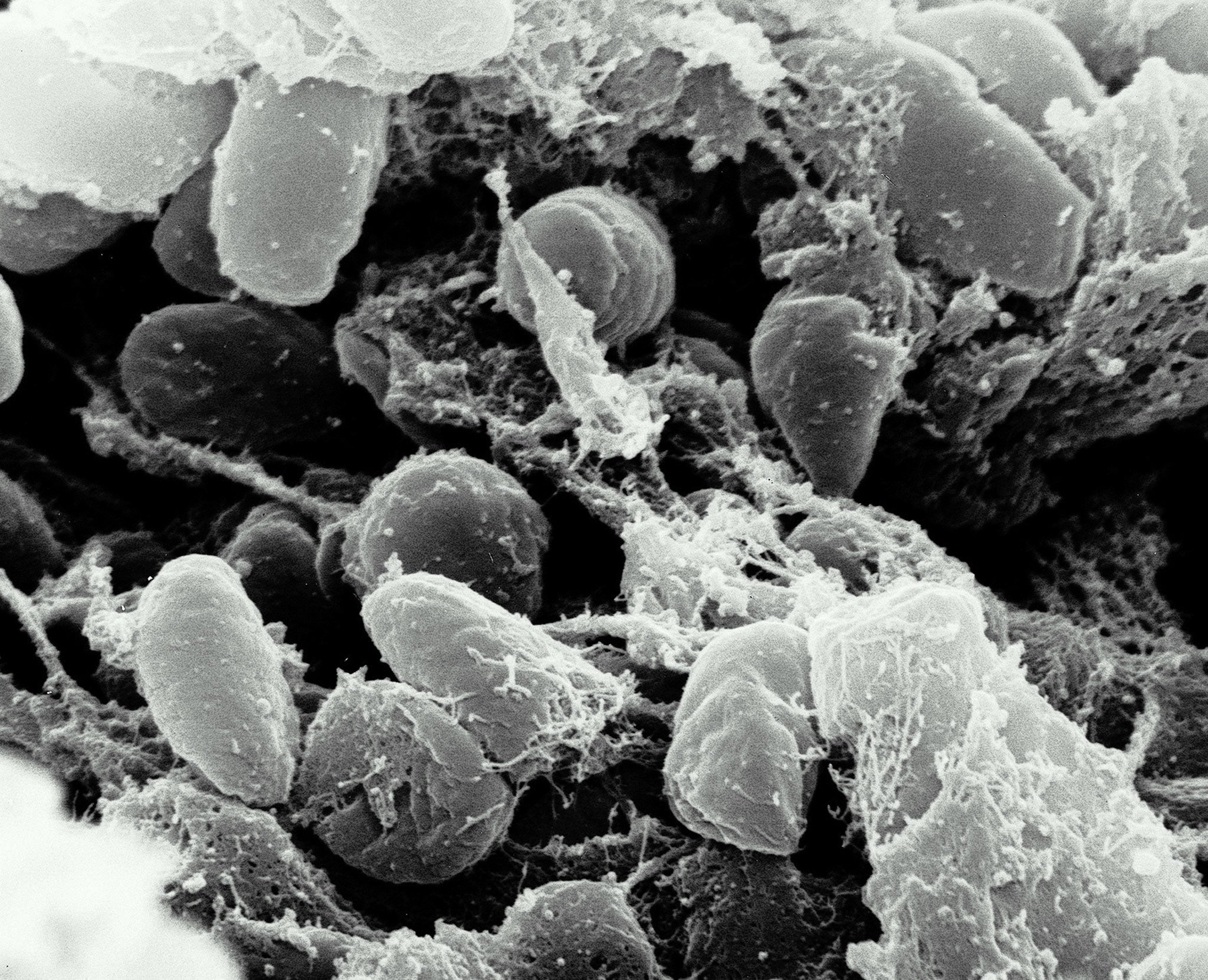Reality bites: the mutant giant-penised fleas invading the tabloids
Every now and then there’s a fresh wave of hysteria over one insect or another – but as James Gilbert questions, is there really all that much to fear about fleas, no matter how prodigious their penises may be?

Your support helps us to tell the story
From reproductive rights to climate change to Big Tech, The Independent is on the ground when the story is developing. Whether it's investigating the financials of Elon Musk's pro-Trump PAC or producing our latest documentary, 'The A Word', which shines a light on the American women fighting for reproductive rights, we know how important it is to parse out the facts from the messaging.
At such a critical moment in US history, we need reporters on the ground. Your donation allows us to keep sending journalists to speak to both sides of the story.
The Independent is trusted by Americans across the entire political spectrum. And unlike many other quality news outlets, we choose not to lock Americans out of our reporting and analysis with paywalls. We believe quality journalism should be available to everyone, paid for by those who can afford it.
Your support makes all the difference.Here we go again. The latest wave of shouty headlines about oversized monster invaders is rolling in. The latest crop – fantastically – are the “billions of super fleas with giant penises” invading British homes.
These monsters are giants, said The Mirror – “far bigger than normal fleas”. And, according to The Express, they “have mutated to have large manhoods and are now immune to poisons”. The Sun went even further, suggesting that their penises were all “erect”. Save yourselves!
Hysteria around arthropods (insects, spiders and their allies) is common fodder for newspapers – it’s been barely a month since a completely different swarm of “giant cannibal spiders” was “invading British bedrooms”. Pholcids, the spiders in question, are not only utterly harmless but are in fact beneficial because they eat other less harmless insects.
Such headlines pour oil on an unhelpful fire of general fear and aversion towards arthropods. This fear is unnecessary and avoidable. An awesome experiment involving Doctor Who in 2011 demonstrated that there is nothing innate or evolutionary about this fear – and it most likely persists through cultural reinforcement. So if we don’t teach our kids to be afraid of bugs, they won’t grow up afraid of bugs. And that means they won’t miss out on a whole world of awesome.
At least with fleas there is something to be genuinely concerned about – they are, after all, obligate bloodsuckers and can be vectors for several important diseases including bubonic plague. But we have been living and dealing with fleas for centuries. Caution is sensible; blind panic is not.
But what’s all the fuss about these fleas and their penises? A flea’s penis, however giant, is quite the wrong end of a flea to get worried about.
Let’s try and unpick this story a little.
Are fleas invading?
To begin with, fleas are not “invading” – they are already found everywhere except the Arctic. Fleas typically follow cycles with adult populations booming in summer and generally dying away in winter. They thrive in damp, humid conditions but cannot develop below about 13°C, meaning winter usually halts their activity.
However, there has been a succession of increasingly wet summers and mild winters, which provides good conditions for flea breeding. So fleas may be proliferating in the balmy weather. Some veterinary organisations and charities have reported increases in cases. And these reports appear to have been cherrypicked by tabloids in an effort to create panic.
But Natalie Bungay of the British Pest Control Association said: “There have certainly not been any reports of any anomalies in flea reports whether it be the size of them or frequency of them.”
Neither is there any truth in the claim that these insects are resistant to current pesticides. While fleas may have become resistant to many older insecticides, there is no conclusive evidence of any resistance to more modern chemical treatments. Concerns about what looks like resistance are mostly down to failure to follow, or stick to, product directions.
There is also no obvious evidence that fleas are getting any bigger. Neither, disappointingly, are their penises.
How giant, exactly? I’m asking for a friend
However, it has to be said: there is at least truth in the rumour of “giant-penised fleas”. Fleas do have extraordinarily long penises. Being in possession of a 3.3mm appendage may not sound like much, but it is up to 2.5 times the flea’s own body length – on an average man that’d be a four-metre member. But this was the case anyway – there is no new breed of particularly monstrously hung mutants, just the regular well-endowed ones.
The penis size of the flea is a record for insects, although not for animals generally as is sometimes claimed. That honour goes to the barnacle (eight times its body length, which would be 14 metres on a human in case you are wondering).

But flea genitalia are hardly a clear and present threat. On the contrary – what flea penises are is fascinating. They have been described as “the most elaborate genital organ in the animal kingdom”. The penis is an immensely long wispy ribbon-like structure, kept coiled up inside the abdomen when not in use. It is so thin that it is “only faintly discernible”, even under a microscope, and cannot enter the female by itself. It must be supported by extra structures called “penis rods” which, along with external claspers, help to manoeuvre the whole apparatus into place for mating to occur.
The precise function of the penis rods is not entirely clear – one end is shaped “like a cobra’s hood”, so they may act to scoop out rivals’ sperm. Alternatively they may help to transfer the sperm to the female – one author observed sperm with tails “wound around the penis rods like spaghetti on a fork”. Nobody really knows.
Such a delicate, fragile organ is hardly something to strike terror into the hearts of the nation, so why all the tabloid hate?
Maters gonna mate
Maybe they were thinking of Strepsipteran penises, or possibly bedbug penises. Those are a whole different, rather stabbier ball game: genuinely the stuff of nightmares. Look them up if you dare. Or maybe bushcricket genitals, some of which resemble bear traps and handcuffs.
The mechanical details of how males and females mate is enormously important in determining whether – and which – DNA is passed on. It’s therefore somewhat central to the process of evolution. Genitals are used as anchors, hooks, locks and keys, turnstiles, advertisements, titillators, manhole-covers, crowbars, weapons, mazes and many more – and with such a bewildering array of functions they are some of the fastest-evolving structures in nature.
Insect genitals, particularly, are a smorgasbord of delightful weirdness. Male damselflies have shovel-shaped penises for removing rivals’ sperm. Some male spiders snap off one of their two detachable penises inside their mate, both to deter future lovers and to prolong sex while they run away. Female barklice’s vaginas are shaped like a prehensile penis and literally reach into the male to grab his sperm.
The point being: insect genitals are compelling enough already, without the need to invent reasons to be scared or disgusted by them “invading our bedrooms”.
So fleas may be enjoying a bit of a comeback in some warm, wet weather. But they are not invading, and neither are they mutants with giant penises. Fleas, in general, have impressive members – but the flea class of 2016 has no particular claim to endowment over previous alumni.
This article was first published in The Conversation (theconversation.com). James Gilbert is a Lecturer in Zoology at the University of Hull
Join our commenting forum
Join thought-provoking conversations, follow other Independent readers and see their replies
Comments